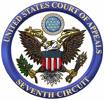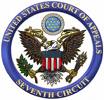Seventh Circuit Criminal Case of the Week: Watch the “R” Word, Prosecutors!
 Two months ago, I posted here about the Seventh Circuit’s sharp rebuke of a prosecutor in United States v. Farinella, in which the defendant was charged with selling mislabeled bottles of salad dressing. The court’s concerns focused, in part, on the prosecutor’s repeated suggestions to the jury that the salad dressing was spoiled, despite the absence of any evidence to that effect. The court, per Judge Posner, rightly took the prosecutor to task for attempting to inflame the jury’s emotions through evocative, but misleading, characterizations of the evidence. We can and should expect prosecutors to act with integrity and restraint in carrying on their critically important public functions, rather than playing the adversarial system for all it’s worth. In my experience, the vast majority of prosecutors appreciate — apologies to Vince Lombardi — that winning is not the only thing. But, when prosecutors do occasionally cross the line, as in Farinella, I am happy to see the courts call them out.
Two months ago, I posted here about the Seventh Circuit’s sharp rebuke of a prosecutor in United States v. Farinella, in which the defendant was charged with selling mislabeled bottles of salad dressing. The court’s concerns focused, in part, on the prosecutor’s repeated suggestions to the jury that the salad dressing was spoiled, despite the absence of any evidence to that effect. The court, per Judge Posner, rightly took the prosecutor to task for attempting to inflame the jury’s emotions through evocative, but misleading, characterizations of the evidence. We can and should expect prosecutors to act with integrity and restraint in carrying on their critically important public functions, rather than playing the adversarial system for all it’s worth. In my experience, the vast majority of prosecutors appreciate — apologies to Vince Lombardi — that winning is not the only thing. But, when prosecutors do occasionally cross the line, as in Farinella, I am happy to see the courts call them out.
I was reminded of Farinella when reading the court’s decision last week in United States v. Mannava (No. 07-3748), in which the court, again per Judge Posner, overturned the defendant’s child enticement conviction based, again, on the prosecutor’s repeated use of misleading and inflammatory language in front of the jury.

